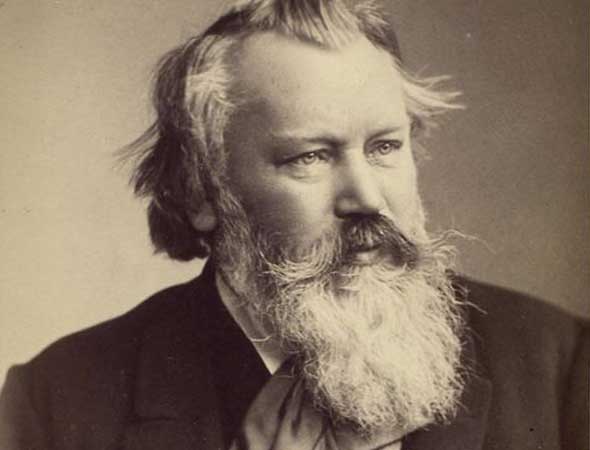BRAHMS: Symphony No. 2
by Jeff Counts
THE COMPOSER – JOHANNES BRAHMS (1833-1897) – Brahms was so busy with travel and performance during his later years that he had to reserve his summers for secluded composition time. His preferred location in 1877 was the resort town of Pörtschach on Lake Wörth in southern Austria. The stunning Wörthsee area would later nurture Mahler and Berg toward their separate aims, and both men must have encountered Brahms’ contented spirit there. Brahms spoke happily of his “pleasant abode in the Castle” but admitted with his typical good humor that his rooms where actually located in the caretaker’s quarters. “For my part,” he often wrote in letters to friends, “I won’t be going anywhere else in the summer without good reason.”

THE HISTORY – With his shoulders noticeably lighter after the decades-long crucible of his first symphony, Brahms produced a second with very little fuss in that genial lakeside atmosphere. Gone was the earnest gravity and historical anxiety of Symphony No. 1, and in its place was the spontaneous sense of warmth and lightness of No. 2. Brahms’ good mood during the process was evident in his correspondence. He wrote of melodies flowing “so freely that one must be careful not to trample them.” Also present in his letters was a sense of mischief about the character of his new symphony. Brahms enjoyed giving his friends false impressions about the music by routinely referring to his “latest” as “dirge-like” and listing the key as F minor to keep everyone guessing. “The new symphony is so melancholy,” he told his publisher, “you won’t be able to stand it. The score should have a black border of mourning.” Clearly, Brahms was surprised by his own serenity and, in the refuge of humor, found a way to leave the examination of it for later. There are no dirges here, no mourning. Brahms’ 2nd is often compared to Beethoven’s “Pastoral” because of the generally pleasant veneer both works have in relation to their stormy predecessors but also because of how much sophistication there is just below their surfaces. Brahms 2nd, though so much less “serious” to the ear that his 1st, is a work of amazingly careful detail and structural rigor. It is worth remembering that Brahms never spent a single second at the fore of the avant-garde during his career. Not one second. Everything he needed came from the before-time, and he was a master at respecting and refining the pre-existing forms of his forebears, especially when he released himself from the pressure of matching them in posterity. In terms of craft and economy, and newfound personal peace, Symphony No. 2 presents a melodic genius in his glory years.
THE WORLD – Elsewhere in 1877, Oglala Lakota war leader Crazy Horse was killed while resisting confinement, the Russo-Turkish War began, the first Championships at Wimbledon were held and the Martian moons Phobos and Deimos were discovered.
THE CONNECTION – Brahms 2 was most recently performed by the Utah Symphony on the Masterworks Series in February 2017. Thierry Fischer conducted.












